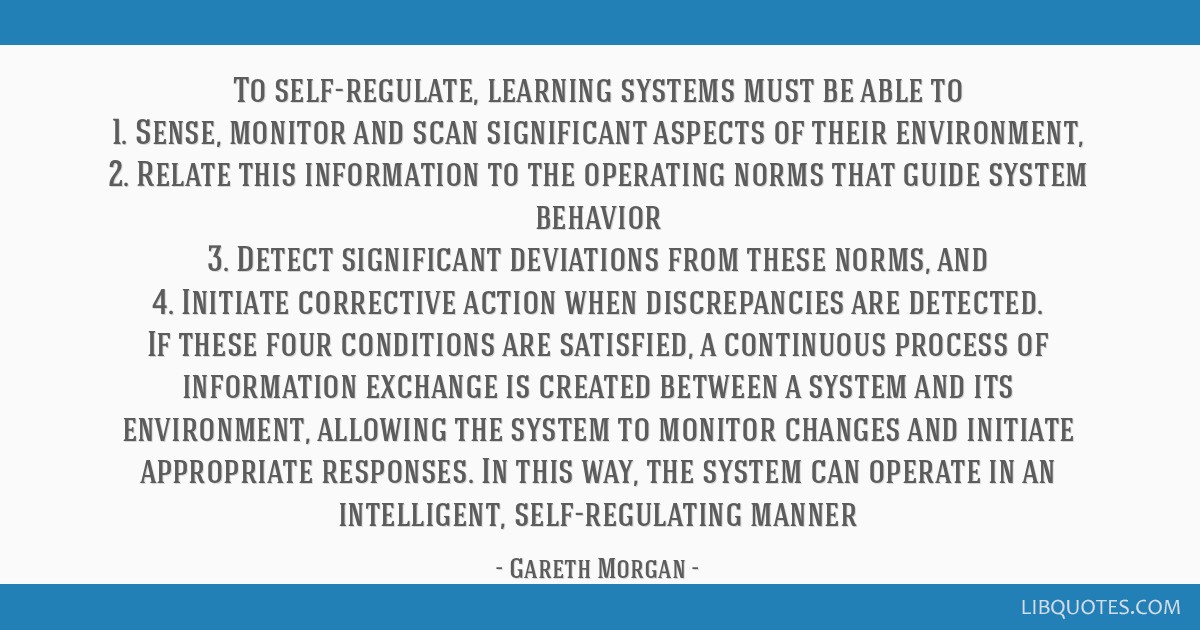To self-regulate, learning systems must be able to
1. Sense, monitor and scan significant aspects of their environment,
2. Relate this information to the operating norms that guide system behavior
3. Detect significant deviations from these norms, and
4. Initiate corrective action when discrepancies are detected.
If these four conditions are satisfied, a continuous process of information exchange is created between a system and its environment, allowing the system to monitor changes and initiate appropriate responses. In this way, the system can operate in an intelligent, self-regulating manner
p. 77-78 (Morgan, 1998); Cited in: Sherryl Stalinski (2005) A Systems View of Social Systems, Culture and Communities. Saybrook Graduate School. p. 5 - Images of Organization (1986)























